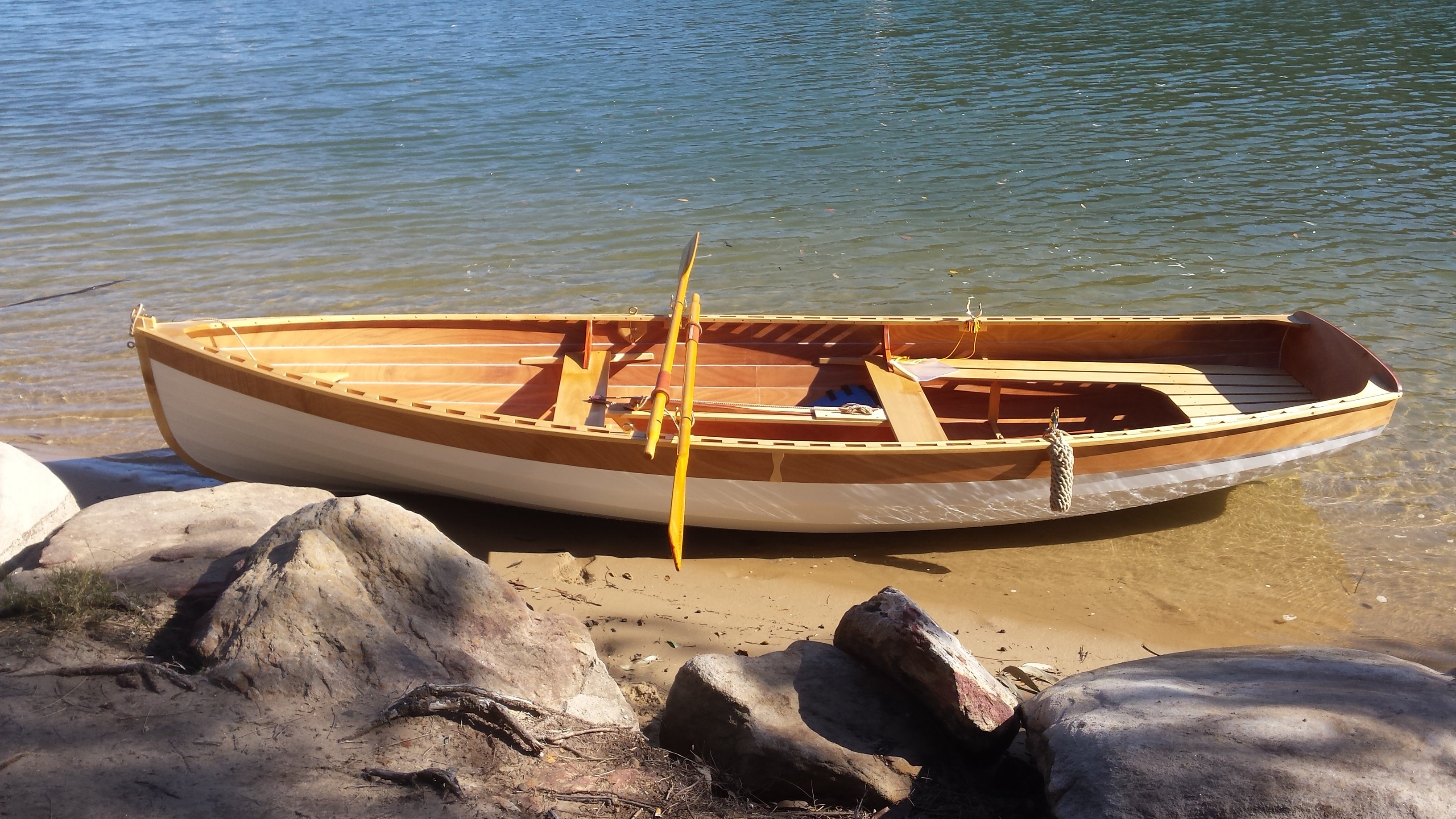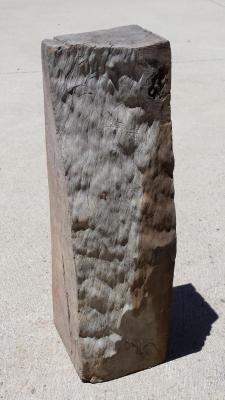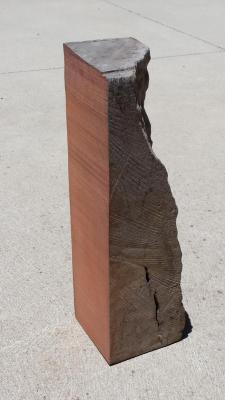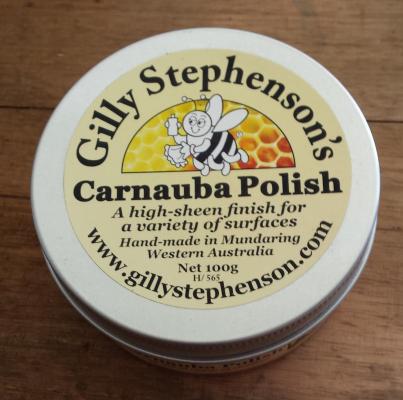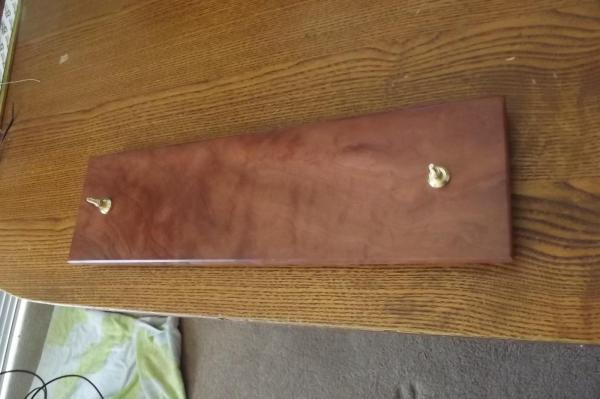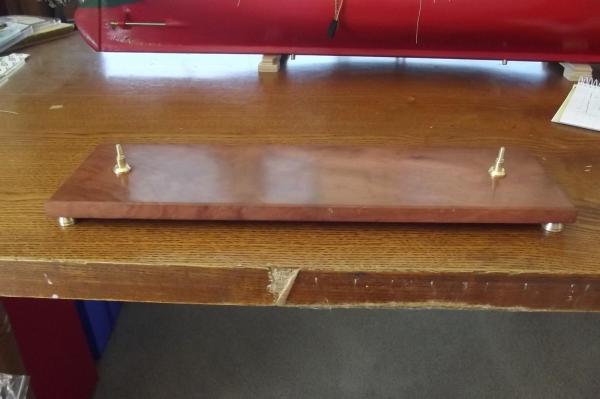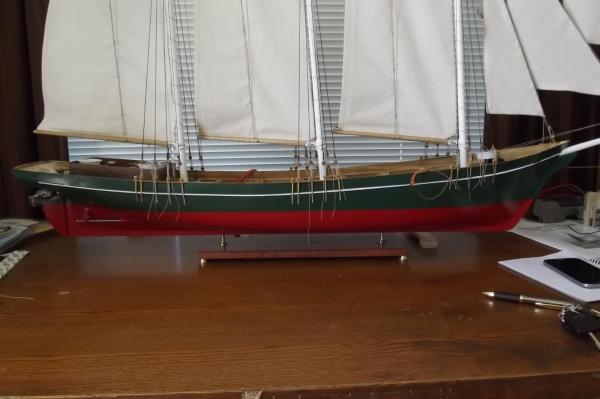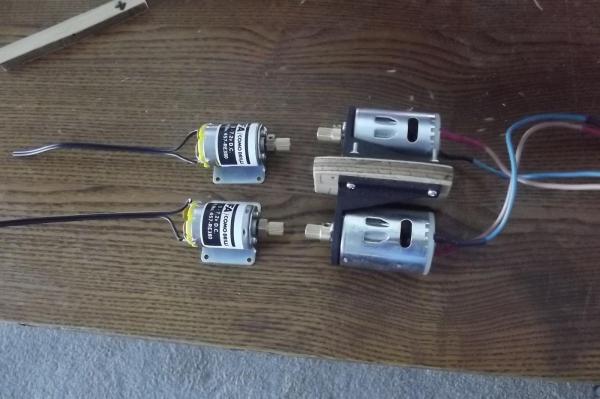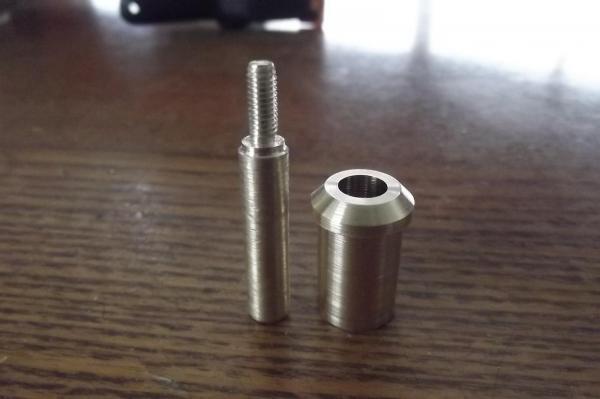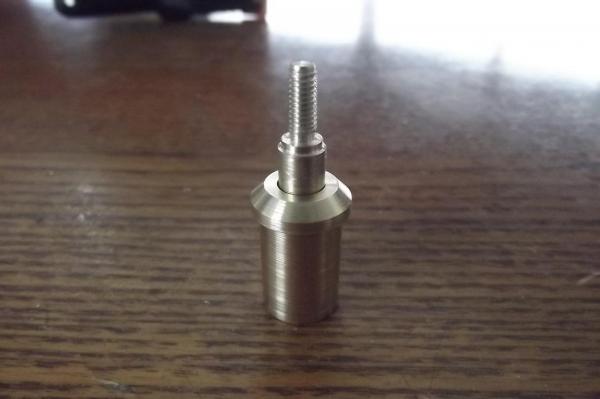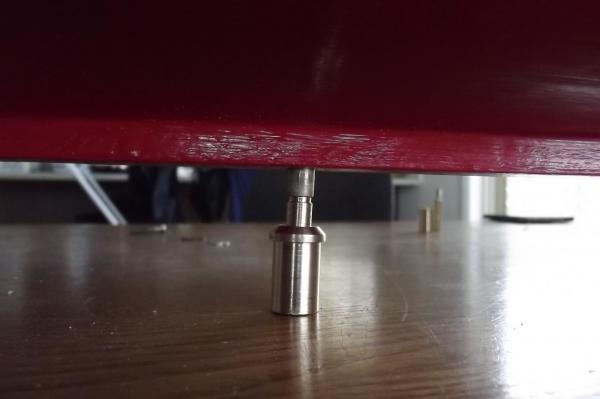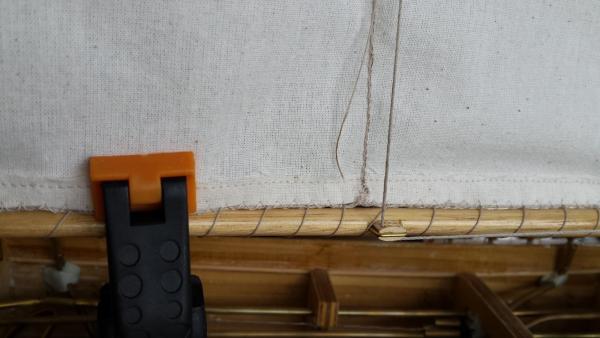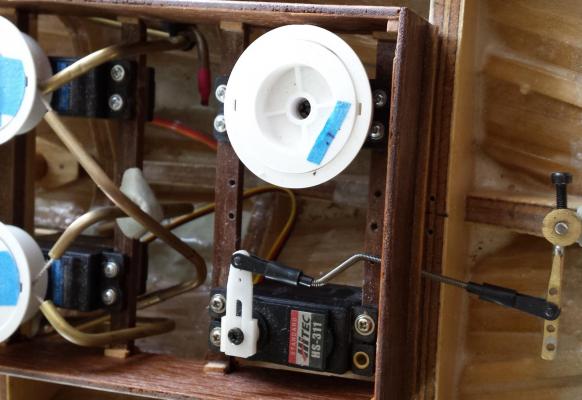-
Posts
1,297 -
Joined
-
Last visited
Content Type
Profiles
Forums
Gallery
Events
Everything posted by Bedford
-
Well John, I started with a brand new blade and it did the job just fine, it has dulled the teeth a little bit but I am impressed. Got the blades from an ebay manufacturer in QLD. I did try and get lose dirt of the exterior before I started because that will blunt a blade in the blink of an eye. The grain is so fine that the saw dust was just that, dust! I sanded it with a belt sander in coarse grit then medium before finishing with 400 grit open coat on the orbital sander and as that wore out it polished the timber to such extent that it had a reflective finish before I applied the wax. It looked almost like a man made resin artificial timber. The wax just brought the colour out a little better. It was a joy to work with in this scale, I have used it before. I turned the pedestals for my Schooner for Port Jackson from it and the top of the capstan on same but you don't really get to appreciate the beauty of it on such small items. When handling it I was reminded of the piece of Lignum Vitae I once had the pleasure of handling at the old Sydney Maritime Museum, not quite as dense or heavy but not far off and almost as smooth.
-
I have walked away from the technical side of this build for a while and it was so nice to just make something for her in the workshop. First, take one very old block of river red gum (I've had this for a quarter of a century and it looked like this when I got it so no idea how old it is) then run said block through the band saw.... Do some sanding then add a little dab of this and rub a bit. Add a few bits of brass fresh off the lathe and you end up with this. It really is such a beautiful piece of timber that I didn't need to make it look fancy by giving it a nice shape, just a small bevel around the edge and it looks amazing, the pics can't do it justice! And this is what it looks like
-
Got it ! I was thinking it might work like a differential in a car and it pretty much does, if you turn one axle with the drive shaft stopped so the diff centre can't turn, the other axle will go in the opposite direction. Free the drive shaft and allow the diff centre to turn and both axles go in the same direction. Obviously in this case there is no differential action, just locked and free, reverse and forward Does that sound right?
-
Hey Floyd, DEFINITELY keeping the auxiliary power in the schooner. I just took the yacht out to the lake for a little sailing, took ages to find the right place to launch to guarantee she would be blown back to shore in the event of failure. I launched her and had about 5 minutes of nice gentle sailing before deciding to bring her back because the wind was failing. I just got her on line with enough momentum to keep her inching forward with the aid of gentle rolling waves from astern. I held her for 10 or 15 mins before I thought the breeze had come back but only did one circle of about 6 metre diameter to bring her back due to the wind failing again. This time she almost didn't make it. I packed up and came home. Still, it was a beautiful afternoon to be out there. On a different tack. The new motors and speed controller have arrived from the UK. She will lose 100grams from the stern with these motors which will help raise the stern closer to level while still (I'm sure) having ample power. Now to make a new motor mount.
-
Magnificent woodwork, I would imagine your customer was very happy with it.
- 18 replies
-
- lullubelle
- yacht
-
(and 1 more)
Tagged with:
-
In the case of the real thing I would imagine it is fairly low revving and with the cranks at 180deg from each other balance would be no problem. This engine will have to rev higher I would think but still the cranks are at 180deg and in this case because it all happens so close to the centre line any minor imbalances won't really be an issue either.
-
Michael, you will have heard the expression "to sleep on it" it works and a good sleep has helped solve some of the trickier issues with my schooner. A note on polishing the internal metalwork, I'm reminded of the story of a car maker in the UK that prides itself on quality, they needed to start making auto gearboxes and bought one with a good reputation and reverse engineered it but being the fastidious types they are they machined the entire inside of the cast housing which the original maker omitted doing. Gearbox after gearbox failed until they sought the help of the original manufacturer who told them simply, "don't machine the inside of the case. The rough casting stops oil running quickly down and causes it to drip onto the mechanisms which helps lubricate it all". Now the truth of this story, I can't be sure of, but I would imagine you might be better off not polishing surfaces that don't need to be.
-
Thanks Michael, it's that "thinking outside the box" I do, I'm always looking for simple solutions and that generally means coming up with something completely different. Robbyn, welcome back aboard! I was joking about selling her but to be honest I'm not sure where she will make berth in the long term because I don't have a huge house. I do keep working out the issues and as I have said before, that's why I am building her but they just keep coming so I sometimes tend to just walk away from her for a while now and then. As for my next project I'm tossing up between an RC square rigger or an RC 2 masted schooner called Altair, you can see her if you do a google images search, she is rather pretty. I also have the Royal yacht Caroline (kit) that I must do for reasons shown in my "signature", I think she will be next.
-
I have done a bit of machining today, I needed to make easily removable posts to stand her on. I will use the sailing keel attachment posts as the stand posts by screwing extension posts into them which will then locate into brass bosses in the display stand. I think this should make the change between sailing and displaying pretty easy. The boss will be epoxied into the display base and the post will just slide into it.
-
As some will know I do enjoy a mechanical challenge so this build is really getting interesting now.
-
I suppose when you put it that way I probably could have bought a RTR tug and had it moored at the bank ready to go, It would have cost more than the auxiliary power in the schooner. Much less headaches though! Still, what I have is in keeping with my goal of working it all out from scratch and making it all work. I will say that if I ever build another such vessel there will be no RC reefing, been there done that, and if it has an auxiliary motor it will probably be in the ballast bulb at the bottom of the keel and powered independently.
-
Hey Dave, yes I was concerned about LiPos in the early days but as you suggested, they have come a long way especially in the charging. My charger is computerised and constantly checks and maintains cell balance. Having said that I still charge my batteries on the sink or similar metal surface. I was sticking to HiMh but everything these days is geared towards LiPo etc so I gave in. Thanks for the compliment on the sails. Floyd I know, I know but it hasn't been cheap or easy and I want to know that if something goes wrong I can drive her ashore in a hurry.
-
Well Floyd I always wanted to rely on sail but with no-one else around here sailing I thought it was a pretty good idea to include auxiliary power. I am still looking at it but since I will have to buy a new speed controller I might just as well get two smaller motors too. Much less weight and the 540's are big enough to drive a much larger vessel.
-
Today has been the first real time I have had on the schooner for a while and while I am achieving a little I am taking about 5 steps back for each step forward. Firstly I have commented in the past that when I power up the radio system some of the winch servos travel in and out which causes great concern because it is all at once and I have no control. While the extra BEC I bought to supply power to the system has cured the glitching that was occurring with all the servos connected it has not stopped the servo "reaching" that occurs on start-up so I went and bought a few more servo extension leads of different lengths so now I have the joins in accessible places meaning I can stow her with these servos disconnected and when I power up the system I can connect them one by one with no misbehaving. Problem solved. However! In trying all this and making sure it all worked the main gaff lazy jack gave up and broke, I can't see why, there was no big harsh snap like before, it just seems to have failed so I will have to replace it and am still considering whether or not I will increase the size of the line which means replacing all three of them but may be worth it I think. And then! I tried the motors just to make sure all is well...................................dead as the proverbial Dodo! I checked the switch and it isn't the problem so the speed controller itself must have died for no apparent reason. Anyone want to buy an unfinished schooner? Seriously though, it is more of a challenge than I was hoping for but one day I will win. Oh and I floated her just to see how the weight is going and she is heavy in the stern as I expected because of all the servos down there as well as the motors and she is listing a few degrees to starboard which I figure is mainly due to the location of the servos in the aft deckhouse with the rudder servo being in the centre so I have relocated it as far to port as I could. You can see the holes where it was mounted right beside the winch servo. Now to really plan where everything else gets mounted because I want to level her out with essential hardware rather than with added ballast because that would mean less weight for the sailing keel. I have read that you want such a vessel to ride a bit high in the bow, makes them sail better, so it is heading in the right direction. I MAY however decide to ditch the motors as they are quite heavy and if I learn to sail the yacht I may not need them in the schooner.
About us
Modelshipworld - Advancing Ship Modeling through Research
SSL Secured
Your security is important for us so this Website is SSL-Secured
NRG Mailing Address
Nautical Research Guild
237 South Lincoln Street
Westmont IL, 60559-1917
Model Ship World ® and the MSW logo are Registered Trademarks, and belong to the Nautical Research Guild (United States Patent and Trademark Office: No. 6,929,264 & No. 6,929,274, registered Dec. 20, 2022)
Helpful Links
About the NRG
If you enjoy building ship models that are historically accurate as well as beautiful, then The Nautical Research Guild (NRG) is just right for you.
The Guild is a non-profit educational organization whose mission is to “Advance Ship Modeling Through Research”. We provide support to our members in their efforts to raise the quality of their model ships.
The Nautical Research Guild has published our world-renowned quarterly magazine, The Nautical Research Journal, since 1955. The pages of the Journal are full of articles by accomplished ship modelers who show you how they create those exquisite details on their models, and by maritime historians who show you the correct details to build. The Journal is available in both print and digital editions. Go to the NRG web site (www.thenrg.org) to download a complimentary digital copy of the Journal. The NRG also publishes plan sets, books and compilations of back issues of the Journal and the former Ships in Scale and Model Ship Builder magazines.

